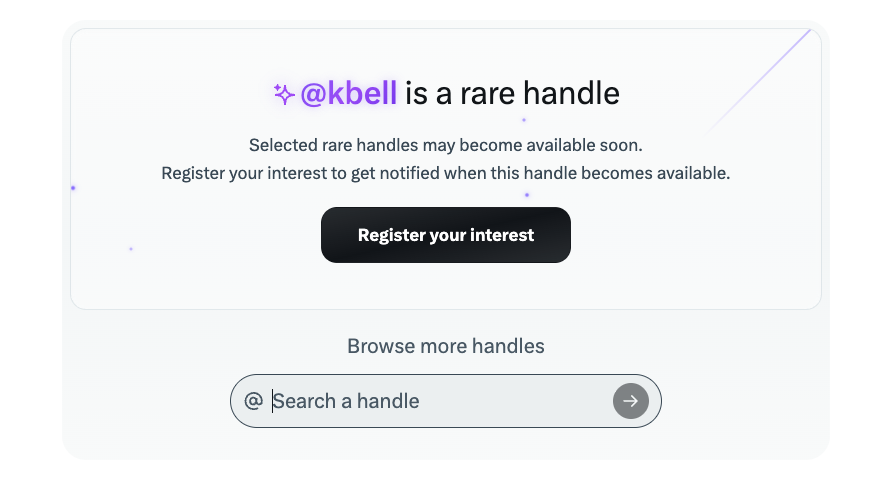After previewing its plans to open a marketplace to "redistribute" dormant handles last month, X has made the feature available to all Premium+ subscribers on the platform. The feature allows subscribers to request new handles that up to now have been unavailable because they belonged to accounts that have since become inactive.
The marketplace offers two types of handles: "priority" and "rare." For priority handles, X has suggested the goal is to give people the chance to have a handle that more closely reflects their name. In practice, though, it's not at all clear how X is determining what's considered a "priority" versus a "rare" handle. I signed up for a $40/month subscription and searched for both @kbell and @karissa only to be told that both are considered "rare" and thus not available to me. I was able to "register" my "interest" in the names, and include a brief description of why I wanted the handles.

The company says that rare handles are "the most valuable" names and are "often words, slang, or containing few characters. Some options that may one day be available, according to my searching, include @memelord, @phone, @gr0k and @AIchat. The exact process for acquiring one of these, though, isn't exactly clear. X says that handles on your watchlist "may be released in a public drop where you, and others can apply to receive the handle for free via a merit based application system." The company has also said that it will make some especially sought-after handles available for purchase on an invitation-only basis, with prices "anywhere from $2,500 to over seven figures."

After a bit of perusing, I did find that there were a few entertaining options that are theoretically available now as "priority" handles, including @six_seven, @elonfarts, @grokfacts and @kbchat. Honestly, all of these were at least a little tempting, though I'm not at all confident X would approve @elonfarts or @grokfacts. You also have to consider these requests at least a little carefully because X is only giving users the ability to request one priority handle during the entire lifetime of their account.
There are also some significant strings attached to the whole process. In addition to being required to maintain a $40/month or $395/year Premium+ subscription, X has a rather strict set of rules for "maintaining your handle." These include:
-Create content regularly. If an account is active but the associated handle remains largely dormant – for example, where little or no original or engaging content is published – X may reclaim the handle.
-Use the handle in a way that reflects the spirit of participation and expression on X. That means active involvement in platform activities (replying, reposting, discussing topics) that help build a vibrant community for sharing ideas and expressions. X’s intent is to ensure that handles remain available for active voices and creators who help advance the mission of the platform, not for speculation or inactivity.
-Ensure regular activity on the platform, with a minimum of 1 device login within a 30 day period. For details, see our Inactive Account Policy.
The terms also state that "X owns and can reclaim any handle," which is more than theoretical. The company has a long history of commandeering desirable handles from users that were actively using them including, infamously, @X.
Given all that, I still have yet to follow through on requesting any of the available "priority" handles I've found. I might just stick with the same handle (@karissabe) I've been using for the last 16 years. It's only two letters off from the supposed "rare" variation of my first name only, and it won't cost anything extra to keep.
